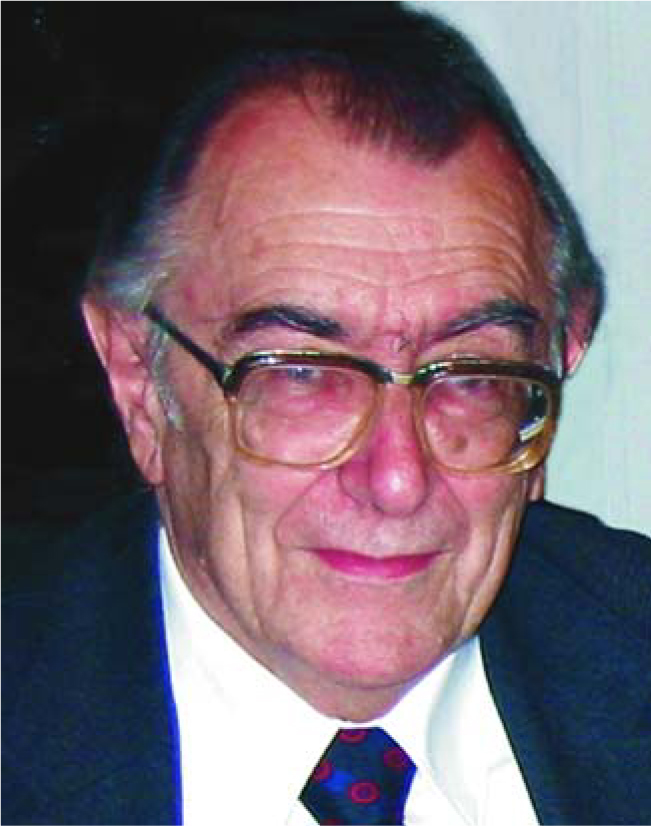Hans Pauly
DOI: 10.1063/1.1996489
Hans Pauly, a highly respected, internationally known leader in the development of molecular-beam scattering studies of intermolecular forces, died of a heart attack on 13 March 2004 at his home in Göttingen, Germany. He had been a founding director of the Max Planck Institut für Strömungsforschung (Max Planck Institute for Fluid Dynamics; renamed the Max Planck Institute for Dynamics and Self-Organization in 2004) in Göttingen and was instrumental in transforming that institute into a world-class center for molecular-beam research.
Born in Bonn on 12 November 1928, Pauly grew up in Cologne and Bonn. He entered the University of Bonn in 1949, a few years after its reopening following World War II. He devoted his diplom project, which he carried out under the direction of Wolfgang Paul, the newly appointed professor of experimental physics who would later share the 1989 Nobel Prize in Physics, to the construction of a special ion source for the just-developed quadrupole mass filter. Subsequently, he was fascinated by the vision of Paul’s colleague, Rudolf Jaeckel, who wanted to explore atomic collision processes in vacuum diffusion pumps to improve the pumps’ performance.
Working largely independently, Pauly realized the basic importance of intermolecular potentials. To investigate them properly, he constructed in 1955 the first prototype of a modern molecular-beam apparatus, which in itself was a remarkable accomplishment considering the still-adverse postwar conditions. His successful measurements of the velocity dependence of integral atom–atom scattering cross sections confirmed the v −2/5 law predicted by H. S. W. Massey and C. B. O. Mohr in 1933. Pauly’s findings thereby provided the first direct experimental confirmation of the R −6 radial dependence of the fundamentally important long-range attractive potential predicted in the 1930s by Fritz London and others. In his 1958 doctoral dissertation, entitled “Streuversuche an Molekularstrahlen” (“Molecular Beam Scattering Experiments”), Pauly developed and anticipated many aspects of modern quantum mechanical approximations for calculating atomic collision cross sections.
His research and the parallel independent molecular-beam experiments on chemical reactions in the US, triggered by the breakthrough experiment of Ellison Taylor and Sheldon Datz in 1955, were responsible for the ensuing rapid developments in molecular-beam scattering experiments in the early 1960s. His work also stimulated the research of US scientists Richard Bernstein, Datz, Ned Greene and his colleague John Ross, Dudley Herschbach, and Erhard Rothe and colleagues and inspired related studies in Europe largely by the German groups of Dieter Beck, Otto Osberghaus and Christof Schlier in Freiburg, and Hans-Gerhard Bennewitz and one of us (Toennies) in Bonn. It was the spectacular successes of those groups that ultimately convinced the Max Planck Society to reorganize the MPI Strömungsforschung in 1969 to make molecular-beam scattering research a central part of that institute.
In the newly reorganized institute, Pauly and his colleagues continued their precise measurements of scattering cross sections. They systematically investigated elastic integral and small-angle differential cross sections and resolved glory undulations and identical particle oscillations and resonances, first for alkali atom projectiles and then for nonalkali systems with all kinds of targets. To extend the collision energy range to more than 1000 eV, an effective charge-exchange source was developed. Similar experiments were carried out for measuring large-angle differential cross sections and completely resolved the supernumerary rainbow oscillations with superimposed, closely spaced interference oscillations. Through a newly developed, highly efficient scheme, the measured cross sections could be inverted to obtain precise experimental potential curves for the first time.
Those and related experiments stimulated calculations by quantum chemists throughout the world. Subsequent investigations at the institute were devoted to understanding the interactions of electronically excited atoms, either short lived (laser excitation) or long lived (metastables). Careful execution and extraordinary precision coupled with elegant theoretical modeling were hallmarks of the Göttingen research. Pauly retired from the institute in 1996.
A quiet, gentle, and modest person with the proverbial humor of a Rhinelander, Pauly occasionally enjoyed a good joke. As a colleague and group leader, he was open for discussions and would freely share his deep insights and vast experience. His students and coworkers are deeply grateful to him for supporting them generously, while simultaneously giving them sufficient freedom for their own scientific development.
Pauly will long be remembered for his many reviews, some with one of us (Toennies), but especially for his authoritative two-volume monograph Atom, Molecule and Cluster Beams (Springer, 2000). He is missed not only by his wife and two children, but also by the molecular-beam community. We have lost a great scientist, an inspiring teacher, and a loyal colleague.


More about the Authors
Udo Buck. Max Planck Institute for Dynamics and Self-Organization, Göttingen, Germany .
Rudolf Düren. Max Planck Institute for Dynamics and Self-Organization, Göttingen, Germany .
J. Peter Toennies. Max Planck Institute for Dynamics and Self-Organization, Göttingen, Germany .




